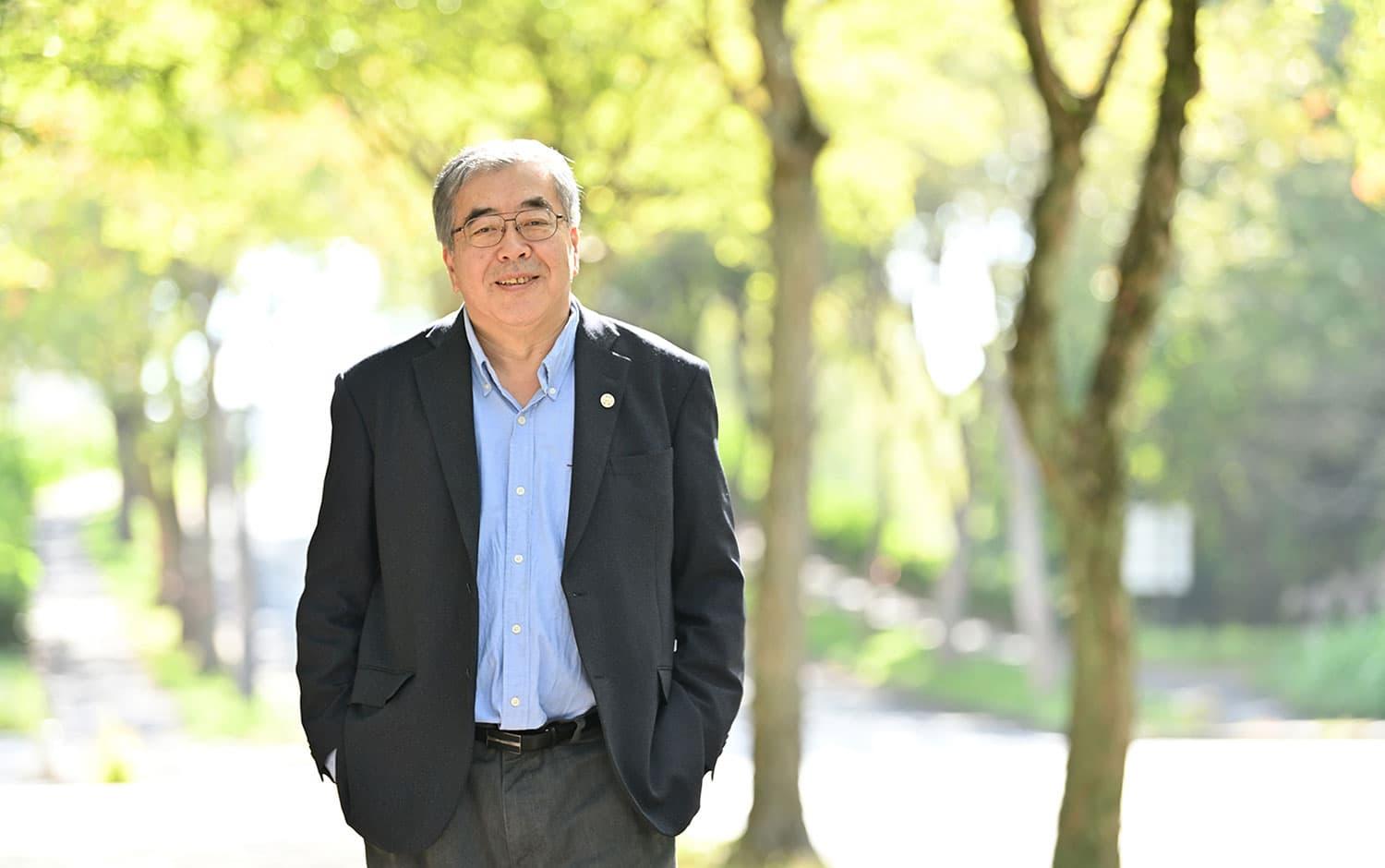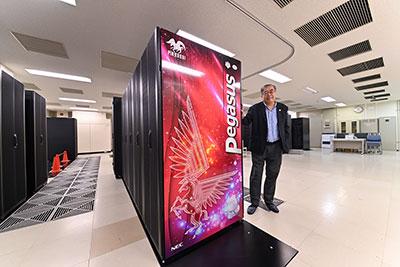TSUKUBA FRONTIER
#043 Faster, Economical, and Unique Supercomputers: Codesigning Creates Top-Level Performance
Professor BOKU Taisuke, Director of the Center for Computational Sciences (CCS)

Supercomputers, essentially high-end personal computers (PCs) interconnected by the tens of thousands, embody simplicity in concept but complexity in execution. The challenge lies in developing a supercomputer that stands unparalleled in its ability to handle diverse scientific and engineering computations, propelled by multiple innovations, including advanced interconnect networks that elevate its performance to "super" levels.
The World of Supercomputers: Proximity Contradicted by Distinctiveness

In today's digital age, computers are ubiquitous, yet supercomputers remain a distinct entity. Often perceived as exclusive tools for specialized research, supercomputers share fundamental components and principles with standard PCs. The difference lies in their configuration: hundreds or even tens of thousands of high-performance computers are connected via an interconnection network to divide and conquer tasks, enabling them to solve tasks that would take years on a conventional PC in a day. This extraordinary capability warrants the "super" designation.
Unbeknownst to many, supercomputers play a critical role in everyday applications such as artificial intelligence (AI). AI systems, now more familiar to the public, rely on supercomputers to learn from vast datasets and deduce the most significant relationships and information in response to queries. Therefore, a balance between computation time and communication time must be considered depending on the problem in question. Moreover, the balance varies on different types and ages of supercomputers. Each supercomputer has its own characteristics.
The Ascendant Role of GPUs
Traditionally, the central processing unit has been the heart of a PC. However, in the realm of supercomputing, graphics processing units (GPUs), initially designed for rendering graphics in gaming and other visual applications, have assumed a pivotal role because they are connected by a special interconnection network, which helps them achieve higher performance than the central processing units. Supercomputers leverage GPUs for their superior computational capabilities, especially for scientific calculations and as accelerators to enhance AI and simulation tasks. Notably, the absence of GPUs in Fugaku, Japan's premier supercomputer launched in 2020, has been a point of contention, as GPU-enhanced supercomputers in the USA have surpassed their performance in just a few years.
The University of Tsukuba's Center for Computational Sciences recently unveiled "Pegasus," a cutting-edge supercomputer outfitted with 120 high-performance GPUs across 120 computers, connected through a state-of-the-art interconnection network. Unique in its incorporation of nonvolatile memory, which retains data without power, Pegasus, despite its compact size, is poised to significantly advance research in scientific computation, engineering, and AI by efficiently processing vast data volumes.
The Key Is "Codesigning"
Merely enhancing hardware performance does not unlock the full potential of a supercomputer. Its true value emerges when the computational tasks are tailored to the system architecture, emphasizing the importance of aligning with user needs. This necessitates a codesigning approach in which developers and users collaborate closely on system design and application programming. Achieving top-level performance hinges on a mutual understanding of the users' computational requirements and hardware capabilities, thus fostering the most effective use of supercomputing resources.
The University of Tsukuba fosters an environment conducive to codesigning, uniquely housing both supercomputer development and research under one roof. Among the nine national universities in Japan with supercomputer centers, only Tsukuba boasts such an integrated research ecosystem, significantly enhancing its global research standing.
As a Unique Supercomputer Center
Despite being a relatively new and small supercomputer center, the University of Tsukuba strives to offer original and specialized supercomputers such as Pegasus and its predecessor, Cygnus. Serving as a joint research facility open to national researchers, over half of its users come from external research groups. Access to supercomputers is highly competitive, with usage contingent on passing a rigorous peer review process.
In the contemporary landscape, supercomputers are vital across all research fields. However, with higher performance comes greater energy demand, making energy efficiency as crucial as computational speed. The rapid generational turnover of supercomputers also necessitates cost-effective development. Among these challenges, our mission is to continue delivering outstanding results by balancing multiple demands and converting inherent pressures into a driving force for advancing supercomputing.
Profile

Holding a Ph.D. in Electrical Engineering from the Division of Science and Technology at Keio University Graduate School, the individual began his career as an Assistant Professor in the Department of Physics, Faculty of Science and Technology at Keio University. Later, he transitioned to the University of Tsukuba, where he has dedicated over three decades to research. In 1996, he played a pivotal role in developing the massively parallel interconnection network of the CP-PACS system, leading to the creation of the world's highest-performing system at that time. Currently, he is the Director of the Center for Computational Sciences (CCS) at the University of Tsukuba. An acknowledged expert in supercomputer systems and application programming, he has contributed to the steering and organizing committees of major international high-performance computing conferences and various governmental committees focused on supercomputer development and operation under Ministry of Education, Culture, Sports, Science and Technology.
(URL:https://www.ccs.tsukuba.ac.jp/eng/)
Article by Science Communicator at the Bureau of Public Relations
TSUKUBA FRONTIER (PDF for printing)


